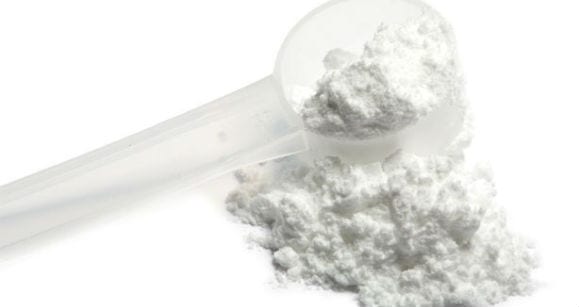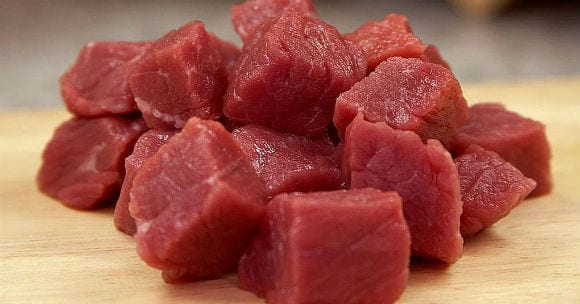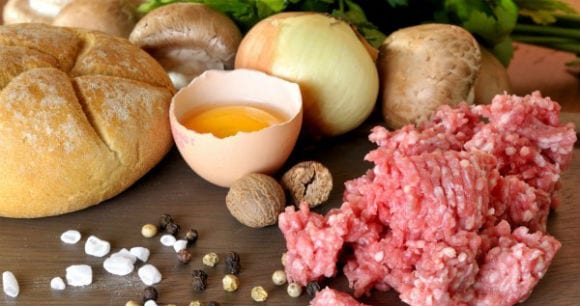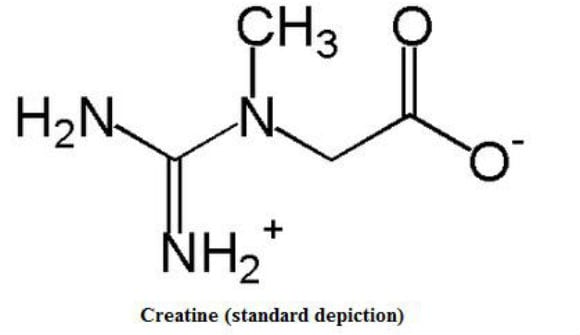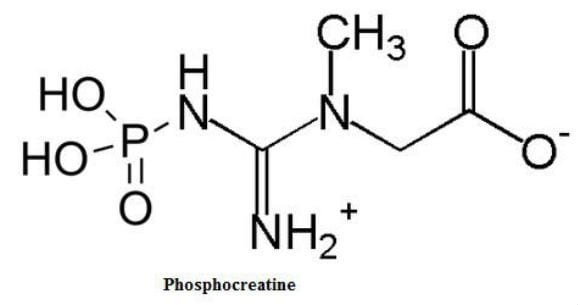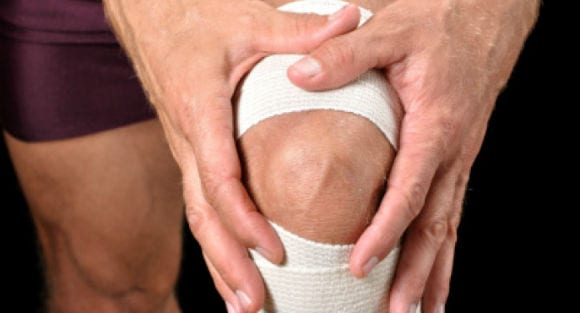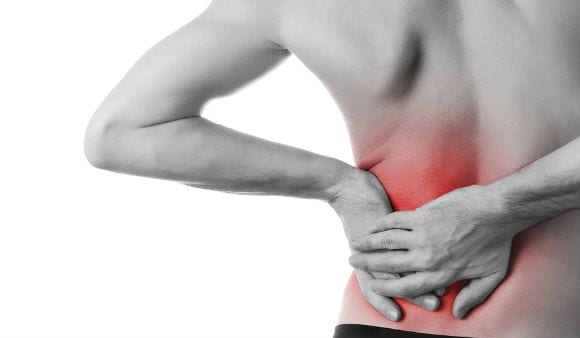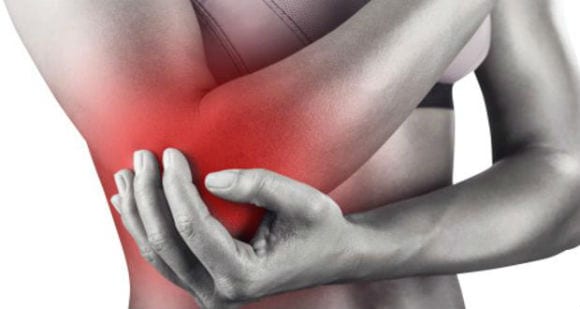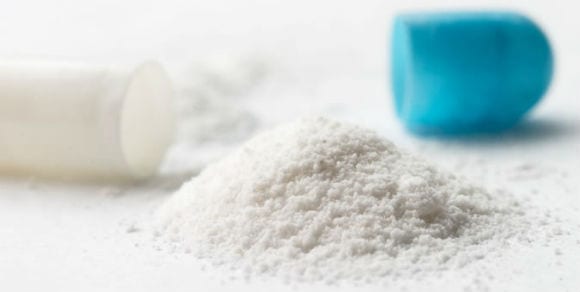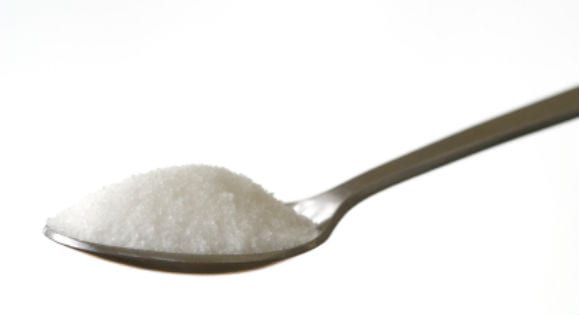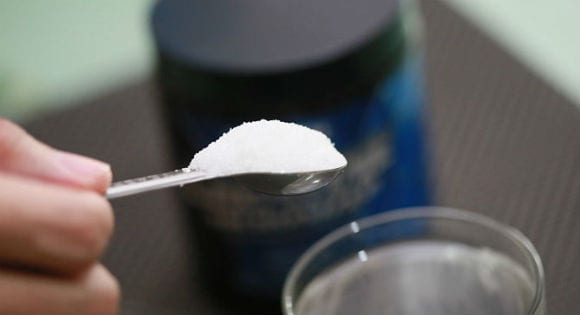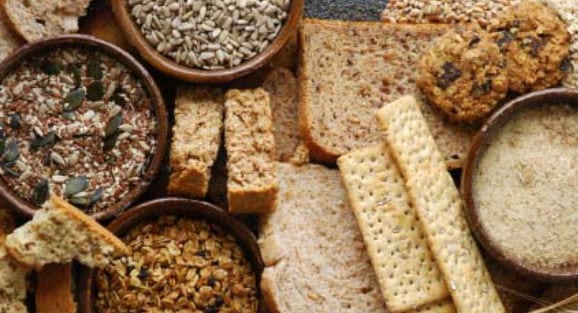
Recovery Supplements: Creatine Supplements for Injuries
By Myprotein Writer Chris Tack: Clinical Specialist Physiotherapist and Manager Guys & St Thomas’ Private Physiotherapy Service (London, UK), Owner & Lead Clinician of All Powers Rehabilitation & Conditioning.
Last month I wrote a piece which discussed the benefits of taking a protein supplement during your process of rehabbing from an injury. The motivation of writing that piece stemmed from the fact that as a physiotherapist, generally my clients are both injured and tend to STOP taking supplements during their recovery.
For this article we shall delve into the world of creatine supplementation. In order to investigate the need for creatine powders or tablets when you are injured it is essential to look at how creatine works and why it is such a popular substance to take when you are training.
What is Creatine?
Creatine is a regular staple for the average gym user who is into weight training. In fact back in 1999 (even before health and exercise was as popular as today’s fitness conscious market) yearly sales of the supplement exceeded approximately £260 million (1). I imagine this amount would have escalated dramatically in the last 10 years. It is commonly thought in gyms that taking creatine will help you train harder and for longer, without feeling the same effects of fatigue post workout.
The discovery of the involvement creatine has on muscle action was made in 1847, but synthetic creatine was not produced as a performance aid until the 1960s. Prior to this, the substance was extracted from raw meat, such as pork, beef or some fish (2). Steak, for example, contains approximately 4g of creatine per 1kg serving (3, 4). It is also, naturally occurring in our bodies via the kidneys, liver and pancreas (5,6) and in a shortage of creatine consumed in your diet, the body creates 1-2g per day (7,8). However, if you are vegan or vegetarian you are likely to have significantly lower amounts stored in your body, as creatine is a naturally occurring animal product (3).
When I previously examined protein, I explained the notion that protein was the “building blocks” of muscle and forms part of the essential environment for tissue recovery. Creatine is a different component of this environment; namely a fuel source. If you remember back to school biology you may recognise the term: “the creatine phosphate system”.
Fuel: Creatine Phosphate System
In order for our muscles to contract, and our body to move (and as such to perform our rehabilitation exercises) we need to turn energy from food into ATP- or adenosine triphosphate.
ATP is described by scientists as the “currency of life”. It is a molecule present in our body’s cells which holds all the energy required to do just about everything we need to do. However, our body only has limited stores of this molecule, and due to its heavy weight as a chemical, if we stored it in high concentrations in our cells, we would cause lots of other issues- disrupting the carefully maintain chemically balanced environment of our cells (9). However, creatine (and phosphocreatine) is a much less heavy molecule which can be stored at up to 6 times greater amounts in fast twitch muscle (6) for use as part of the creatine kinase energy system.
When you take a creatine supplement it is absorbed into the blood stream and then is picked up by muscles (e.g. skeletal muscles or the heart). This occurs through a transport system controlled by the hormone, insulin (10,11), and when absorbed into muscle the creatine joins with phosphate to form phosphocreatine to be stored as fuel. This fuel is used by the creatine kinase reaction to create ATP.
The ATP-CP (creatine phosphate/ phosphogen) energy system is our initial energy system which controls activity within the first 10 seconds. It controls short, fast and high intensity activities (12). For example, a weight lifter who is completing low repetitions with high weight. This is followed by the glycolytic metabolism which provides energy for the next 1 minute and 50 seconds (approximately), which is subsequently followed by the aerobic system (which uses oxygen to create ATP).
As such, for an individual who is exercising with weights to build strength, creatine is an essential component to ensure enough fuel is available in their muscles. Interestingly, creatine supplementation may also increase re-synthesis of phosphocreatine during the rest periods between exercise sessions and prolonged use may increase protein synthesis within muscle to increase growth (13).
Creatine for Injuries: Creatine & Injured Tissue
But what about a more “normal”, “run of the mill” injury? Like perhaps, a knee ligament sprain or a back muscle strain?
One of the other essential components for a rehabilitation environment, aside from nutrition, is rest or controlled immobility. This means in order to let the body repair itself, we have to stop using the injured body part as actively. Every injury is likely to involve a period of reduced activity.
THE SCIENCE: Creatine During Rehabilitation
A group of researchers spread across Belgium, Denmark & the UK (14) found that just two weeks of immobility in a cast had a negative effect on muscle’s ability to convert energy.
They took a group of 22 young, healthy volunteers and immobilised their right legs in a cast for 2 weeks

Some of the volunteers were assigned to the “creatine group” and given 5g of creatine, 4 times per day during the rehabilitation. The “placebo” group were given 5g of maltodextrine (carbohydrate), 4 times per day. Both substances tasted the same, and no-one knew which supplement they had been given. Later these supplements were reduced to 5g per day. After 2 weeks of immobilisation and after the 10 week rehabilitation period a biopsy was performed and tests were undertaken on the vastus lateralis muscle tissue (the largest part of the quadriceps!).
The results they found demonstrated that creatine supplementation may benefit the production of energy via the glycolitic energy pathway- where glucose is converted to pyruvic acid and ATP is formed.
They found that all participants had a 20% reduction in the GLUT4 protein in their muscles after 2 weeks in a cast. This protein is used by insulin within the muscle tissue to facilitate the movement of glucose into muscle tissue cells (20). The more GLUT4, the more glucose for energy.
At the end of the rehabilitation programme, the creatine group had increased by 10%, and there remained a 30% difference between the creatine and placebo groups. The authors concluded that taking oral creatine both prevented the reduction of GLUT4 during immobilisation, and then increased GLUT4 content of muscle tissue during rehabilitation.
This means that if you are injured and immobilised for a period, using a creatine supplement would ensure your muscle tissue remains efficient in creating energy, as well as increasing glycolitic metabolism further during your rehabilitation. This means less fatigue during your difficult rehabilitative exercise programme, and quicker progression and gains.
Creatine Dosage
It has been established that high doses of 20-25g per day of oral creatine can rapidly raise the amount of total creatine in muscle (14). This has been found to be a 20% increase in total creatine (13, 21).
Now this recommendation is to RAPIDLY increase total creatine content of muscle. Much the same benefit can be from undertaking a regular course of creatine for a given period.
For example, creatine monohydrate in tablet or powder form during the onset of your injury and during rehabilitation can maximise the amount of creatine available. Each tablet would provide 1g of creatine or each serving of powder would provide 5g.
Another option to fully maximise efficiency could be to upgrade to a Creapure® supplement in either tablet or powder form. This option would also provide 1g per tablet or 5g per serving, however the purity of the creatine is greater as it is tested consistently to show by-products are removed (e.g. creatinine or dihydrotriazine). It is 99.99% pure creatine monohydrate.
Creatine +
Usually people want a supplement free from “added extras” however a couple of nice options are available to give you added benefits from your creatine supplementation during recovery from injury.
The first is the new MYPRE pre-workout and creatine formula.
During rehabilitation a couple of things are for certain: 1) You want the maximal bang for your buck of anything you are ingesting. There is no room for extras when the amount of activity you are undertaking is reduced.
2)Energy is low, motivation is low and rehabilitation is (sometimes!) boring.
MYPRE combines four different creatine types (including Creapure®); a caffeine and guarana boost; essential amino acids (including BCAAs and leucine); and key vitamins and minerals in one supplement. This combo will get you off the coach and into the gym for your rehabilitation exercises, alongside giving you the energy and building blocks for new muscle synthesis. Just remember that this is best when returning to a strengthening programme, and not the best when you are in the early stages of healing and resting!
Creatine and CARBS
Another combo you may not expect is a creatine and carbohydrate mix. Yes, I know you want to minimise carbs during this low activity down time but please here me out!
Ingesting carbohydrate raises the amount of blood insulin, and in turn helps stimulate muscle blood flow (10). Also, remember that via the protein GLUT4, insulin is the main transporter of creatine into the muscle and as such combining carbs and creatine in a supplement is likely to increase uptake of creatine into your muscles (11). In fact creatine stores in muscle have been found to increase by 60% greater when carbs are added in addition to creatine (22, 23).
In order to add this additional benefit on 2g of glucose per kg of bodyweight needs to be ingested per day during the rehabilitation period (22).
The Creapure® chewable tablets are an excellent option to add a small amount of carbs into your creatine supplementation as they contain the sugar dextrose (a form of glucose). They provide 3g of creatine and 5.4g of glucose per serving.
Another great option is the creatine gluconate powder. This supplement combines a molecule of creatine to a molecule of glucose for 5g of this compound per serving.
Risky Business?
Lots of people complain about the side effects of taking a creatine supplement, but many will report these issues after long periods of use without a break. Creatine is designed to be utilised for loading/ off loading periods where you fill the muscles with a steady supply of creatine and then take a break from the supplement.
The available evidence describes the only side effects as increase body mass (due to water retention in the muscles) and gastrointestinal issues (5, 24, 25). These GI issues tend to be wind and diarrhoea and only occur with excessive overuse (13).
There were concerns that use of creatine may alter the stiffness of the area where tendon joins to muscle (which may lead to tendon injuries or tears) (26, 27). However, this claim has been refuted (28).
Creatine GUIDELINES
- 1) It is evidently a good idea to have creatine in your system when it is needed most (to repair from muscle or tendon injury or strengthen following a period of immobilisation).
- 2) If you are undertaking a creatine loading phase when you suffer an injury I would suggest completing the course.
- 3) If you are not taking a creatine supplement and suffer an injury get started with a creatine supplement and aim for between 5-10g per day for a period of 4 weeks. Whilst this is not the recommended 20-25g for maximal creatine storage- this amount may be sufficient without adding any stomach issues!
- 4) If you have JUST completed a course of creatine when you are injured I would say take some more during the period you are immobilised to prevent loss of creatine stores, but then stop when the rehabilitation period of strengthening starts.
- 5) Add some carbs to your creatine supplement at a rate of 2g extra per day- this is easily achieved with Creapure® chewable tablets or switching to a creatine gluconate powder.
References:
1) Kramer, W (1999). Proceedings of the American College of Sports Medicine Advanced Team Physician Course. Orlando, FL: American College of Sports Medicine.
2) Williams, MH, Kreider RB & Branch JD (1999). Brief history. In: Creatine:The Power Supplement. Champaign, IL, Human Kinetics. pp. 3–11.
3) Balsom, PD, Soderlund, K & Ekblom B (1994). Creatine in humans with special reference to creatine supplementation. Sports Med. 18(4):268–280.
4) Leonard, S & Feldman, E (1998). How strong is the case for creatine supplementation in athletes? Consultant. 38(8):1858.
5) Haff, GG, Kirksey, B & Stone MH (1999). Creatine supplementation. Strength Cond. J. 21(4):13–23.
6) Plisk, SS & Kreider, RB (1999). Creatine controversy. Strength Cond. J. 21:14– 23.
7) Loike, JD, Somes, M & Silverstein, SC (1986) Creatine uptake, metabolism, and efflux in human monocytes and macrophages. Am. J. Physiol. 251: 128–135.
8) Wyss, M, & Kaddurah-Daouk, R (2000). Creatine and creatinine metabolism. Physiol. Rev. 80:1107–1213.
9) Brooks, GA, Fahey, TD & White TP (1996). Exercise Physiology: HumanBioenergetics and Its Applications (2nd ed.). Mountain View, CA: Mayfield Publishing.
10) Baron, A (1994). Hemodynamic actions of insulin. Am. J. Physiol. 267:E187–E202.
11) Steenage, GR, Lambourne, J, Casey, A, Macdonald IA & Greenhaff PL (1998). Stimulatory effect of insulin on creatine accumulation in human skeletal muscle. Am. J. Physiol. 275:E974–979.
12) Grande BM (2005). Creatine Supplementation: Forms, Function, and Effects. Strength and Conditioning Journal. 27, 1, 62-68.
13) Juhn, MS (1999). Oral creatine supplementation: Separating fact from hype. Phys.Sportsmed. 27(5):47.
14) Eijnde, BO, Ursø, B, Richter EA, Greenhaff PL & Hespel P (2001). Effect of Oral Creatine Supplementation on Human Muscle GLUT4 Protein Content After Immobilization. Diabetes. 50, 18-23.
15) ACSM (2000). American College of Sports Medicine roundtable: The physiological and health effects of oral creatine supplementation. Med Sci Sports Exerc 32: 706–717.
16) Vandenberghe K, Goris M, Van Hecke P, Van Leemputte M, Vangerven L, Hespel P (1997). Long-term creatine intake is beneficial to muscle performance during resistance training. J Appl Physiol 83:2055–2063.
17) Klivenyi P, Ferrante RJ, Matthews RT, Bogdanov MB, Klein AM, Andreassen OA, Mueller G, Wermer M, Kaddurah-Daouk R, Beal MF (1999). Neuroprotective effects of creatine in a transgenic animal model of amyotrophic lateral sclerosis. Nat Med 5:347–350.
18) Tarnopolsky M & Martin J (1999). Creatine monohydrate increases strength in patients with neuromuscular disease. Neurology 52:854–857.
19) Walter MC, Lochmüller H, Reilich P, Klopstock T, Huber R, Hartard M, Hennig M, Pongratz D, Müller Felber W (2000). Creatine monohydrate in muscular dystrophies: a double-blind, placebo-controlled clinical study. Neurology 54:1848–1850.
20) Shepherd PR & Kahn BB (1999). Glucose transporters and insulin action: implications for insulin resistance and diabetes mellitus. N Engl J Med 341:248–257.
21) Greenhaff PL, Bodin, K, Soderland, K & Hultman E (1994). The effect of oral creatine supplementation on skeletal muscle phosphocreatine resynthesis. Am. J. Physiol. 266:E725–E730..
22) Preen D, Dawson B, Goodman, S, Beilby, J & Ching S (2003). Creatine supplementation: a comparison of loading and maintenance protocols on creatine uptake by human skeletal muscle. Int.J. Sport Nutr. Exerc. Metab. 13:97– 111.
23) Green AL, Hultman, E, Macdonald, IE, Sewell DA, & Greenhaff PL (1996) Carbohydrate ingestion augments skeletal muscle creatine accumulation during creatine supplementation in humans. Am. J. Physiol. 271:E821– E826.
24) Clark JF (1997). Creatine and creatine phosphate: are view of their use in exercise and sport. J. Athl. Train. 32:45–51.
25) Stone MH, Sanborn, K, Smith, LL, O’Bryant, HS, Hoke, T, Utter, AC, et al. (1999) Effects of in-season (5 weeks) creatine and pyruvate supplementation on anaerobic performance and body composition in American football players. Int. J. Sports Nutr. 9:146–165.
26) Poussen M, Van Hoeke, J & Goubel, F (1990) Changes in elastic characteristics of human muscle induced by eccentric exercise. J. Biomech. 23:343– 348.
27) Volek JS, Duncan, ND, Mazzetti, SA, Staron, RS, Putukian, M, Gomez, AL, et al. (1999). Performance and muscle fiber adaptations to creatine supplementation and heavy resistance training. Med. Sci. Sports Exerc. 31:1147–1156.
28) Watsford, ML, Murphy, AJ, Spinks, WL & Walshe, AD (2003). Creatine supplementation and its effect on musculotendinous stiffness and performance. J. Strength Cond. Res. 17, 26–33.
Our articles should be used for informational and educational purposes only and are not intended to be taken as medical advice. If you're concerned, consult a health professional before taking dietary supplements or introducing any major changes to your diet.

